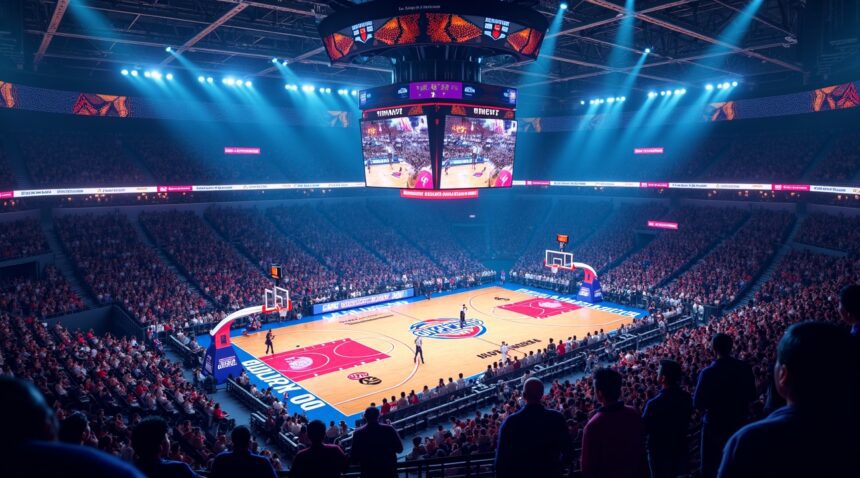The NBA’s strategic landscape has undergone fundamental reshaping through several groundbreaking rule changes, with the introduction of the NBA Cup tournament and modifications to statistical tracking leading the transformation.
Key Takeaways
- The NBA Cup tournament: This innovation has revolutionized the regular season by introducing an in-season competition featuring group stages, knockout rounds, and major prize incentives. It enhances fan engagement during typically uneventful parts of the schedule.
- End-of-quarter heave rule changes: Players are now protected when taking shots from beyond 36 feet in the final three seconds of a quarter. These attempts no longer negatively affect shooting percentages, encouraging more dramatic buzzer-beater tries.
- Expanded replay review systems: Officials can now review related fouls during out-of-bounds challenges if specific criteria are fulfilled. This improves decision-making and ensures more accurate officiating during pivotal moments.
- G League experimental rules: The NBA’s developmental league tests innovations such as modified coach’s challenges, quicker shot clock resets, fewer timeouts, and single free throw formats. These changes are designed to boost game tempo and viewer excitement and may soon be adopted in the NBA.
- Offensive-focused rule modifications: Over the past few decades, the league has implemented changes such as the restriction of hand-checking and adjustment of the three-point line. These modifications have shaped today’s high-scoring, fast-paced gameplay that emphasizes entertainment and offensive creativity over traditional defense.
Learn More
For further insights on evolving NBA strategy and the impact of modern rule changes, visit the NBA’s official news page.
The NBA Cup Tournament Revolutionizes Regular Season Competition
The NBA Cup stands as one of the most significant additions to professional basketball since the league’s inception. I’ve witnessed how this innovative in-season tournament has transformed the traditional flow of the NBA calendar, injecting fresh excitement into what was previously a predictable regular season stretch.
Tournament Structure Creates New Stakes
The format itself represents a complete departure from conventional NBA operations. All 30 teams get divided into six groups of five, organized by conference, creating intense competition within smaller pods. Group-stage games occur on specially designated dates, ensuring maximum attention and viewership for these crucial matchups.
The progression system builds genuine drama throughout the competition. The six group winners advance automatically, while two wild card teams earn their spots through careful calculations of records and tiebreakers. This single-elimination knockout structure mirrors March Madness intensity, something the NBA had never captured during its regular season.
Las Vegas serves as the tournament’s climactic destination, hosting both semifinals and finals in a neutral-site atmosphere. The championship game represents something unique in modern sports – an 83rd game that doesn’t count toward regular season records, allowing teams to compete purely for tournament glory and substantial prize money.
Scheduling Innovation Reshapes the Calendar
The tournament’s integration required fundamental changes to how the NBA constructs its schedule. Teams initially receive only 80 announced games, with the remaining two contests determined by tournament performance. This flexible approach ensures every franchise plays exactly 82 regular season games while accommodating the Cup’s requirements.
This scheduling innovation has proven particularly beneficial for maintaining competitive balance. Teams that exit early don’t gain unfair rest advantages, while those advancing deeper earn additional meaningful games. The structure also provides natural break points in the season, giving players and fans distinct phases to follow.
Prize incentives have elevated the tournament beyond mere exhibition status. Players compete for significant financial rewards, with winning team members receiving substantial bonuses that make every possession matter. This financial motivation, combined with the tournament’s prestigious Las Vegas finale, has legitimized the competition in players’ minds.
The NBA Cup has successfully addressed one of basketball’s longstanding challenges – maintaining fan engagement during the traditional mid-season lull. Similar to how coaching contracts and trade deadlines create pivotal moments, this tournament provides natural storylines that sustain interest throughout November and December. The Cup’s debut season demonstrated its immediate impact, generating increased television ratings and social media engagement during traditionally quieter periods.

End-of-Quarter Heave Rule Encourages More Dramatic Last-Second Shots
The NBA introduced a groundbreaking rule change during the 2025 Summer League that targets one of basketball’s most overlooked strategic elements: the end-of-quarter heave. This innovative approach addresses a long-standing issue where players would deliberately avoid taking legitimate scoring opportunities simply to protect their personal shooting statistics.
How the New Rule Works
Under the updated regulations, heaves are specifically defined as shots taken from at least 36 feet away within the final three seconds of the first three quarters, provided the attempt originates from the backcourt. I find this precision in definition crucial because it eliminates any ambiguity about which shots qualify for the special statistical treatment.
The rule fundamentally changes how these attempts affect box scores. Previously, a missed heave would damage a player’s field goal percentage just like any other shot attempt. Now, these misses only impact the team’s overall field goal percentage while leaving individual player statistics untouched. Players can launch these desperation shots without fear of harming their personal shooting numbers.
Breaking Down Statistical Impact
The statistical transformation this rule creates extends beyond simple number protection. Before this change, smart players would often let the clock expire rather than attempt a low-percentage shot that could hurt their averages. Teams lost potential scoring opportunities because individual players prioritized personal statistics over team success.
Consider how this change affects different aspects of the game:
- Players gain freedom to attempt shots they previously avoided
- Teams create more genuine scoring chances in crucial moments
- Fans experience increased excitement during quarter transitions
- Statistical accuracy improves by separating desperation attempts from regular shot selection
- Coaches can design plays knowing players won’t hesitate to shoot
The Summer League deployment serves as a testing ground for this concept. NBA decision-makers are carefully monitoring how players respond to the rule change and whether it achieves the intended effect of increasing dramatic moments without compromising competitive integrity.
Early observations suggest players are indeed more willing to attempt these shots. Instead of dribbling out the clock or making safe passes, they’re launching ambitious attempts that could potentially swing momentum. The psychological barrier that previously existed has been removed, creating a more entertaining product for fans while maintaining statistical fairness for players.
This rule change represents a broader trend in how the league thinks about balancing individual achievement with team success. Similar to how the NBA has adapted other regulations to enhance fan experience while protecting player interests, the heave rule demonstrates careful consideration of multiple stakeholder perspectives.
The timing of implementation through Summer League allows the NBA to gather comprehensive data before making any permanent changes. League officials can evaluate whether the rule produces the desired increase in exciting moments while ensuring it doesn’t create unintended consequences for game flow or strategy.
Players have responded positively to the change, expressing relief that they can now take shots they believe give their team the best chance to score without personal statistical penalties. This shift could influence how teams approach end-of-quarter situations throughout the regular season if the rule gains permanent adoption.
The success of this rule change could pave the way for additional statistical modifications that better reflect the reality of basketball situations. By separating context-dependent shots from regular offensive possessions, the NBA demonstrates its commitment to evolving alongside the modern game while preserving the statistical integrity that fans and analysts value.
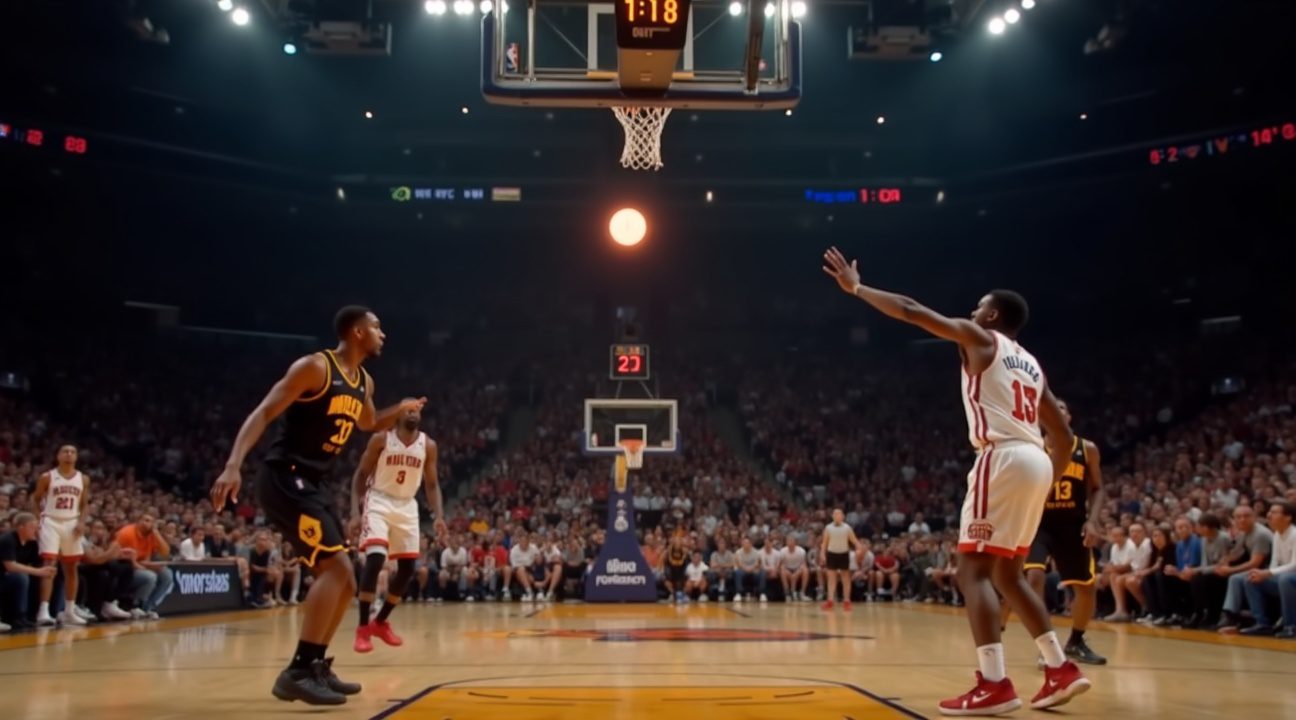
Expanded Replay Review System Improves Critical Game Decisions
The NBA’s decision to expand replay review capabilities during the 2024-25 season represents one of the most significant officiating changes in recent memory. This modification fundamentally altered how referees handle disputed plays, particularly those involving coach’s challenges for out-of-bounds calls.
Previously, officials could only review the specific out-of-bounds incident that triggered a coach’s challenge. The system operated under strict limitations that sometimes led to frustrating situations where clear fouls occurred simultaneously with boundary violations, yet referees couldn’t address both infractions during the same review. This created scenarios where technically correct calls felt unsatisfying to players, coaches, and fans alike.
Three-Part Criteria for Enhanced Review
The expanded instant replay system now operates under specific guidelines that determine when officials can examine related fouls during out-of-bounds reviews. These three criteria must be evaluated before referees can broaden their scope:
- Players involved in both the foul and out-of-bounds incident must be assessed for connection
- Proximity of the potential foul to the boundary violation gets measured carefully
- Time elapsed between the two events cannot exceed reasonable limits
These parameters ensure that replay review doesn’t become an endless examination of every play detail while still addressing obviously related infractions that impact game outcomes.
Impact on Late-Game Officiating
Critical moments in close games now receive more comprehensive scrutiny than ever before. Officials can address situations where a player gets fouled while attempting to save a ball from going out-of-bounds, or where contact occurs immediately before a turnover. The change particularly benefits teams that previously lost possessions due to fouls that went undetected during boundary disputes.
This expanded approach mirrors broader league trends toward improving officiating accuracy through technology. Similar to how coaching innovations continue evolving, referee procedures adapt to address game flow concerns while maintaining competitive integrity.
The modification affects strategy significantly, as coaches now weigh challenges differently knowing that successful reviews might uncover additional infractions. Teams can’t simply focus on whether a ball touched a specific player last; they must consider whether any related contact influenced the play’s outcome.
Statistical analysis from early season implementation shows increased accuracy in late-game officiating decisions. Fewer controversial endings result from situations where obvious fouls accompany out-of-bounds plays, leading to improved player and fan satisfaction with game outcomes. The system particularly benefits defensive players who previously couldn’t draw calls while making legitimate attempts to prevent turnovers.
This change represents the NBA’s commitment to using available technology for fair competition rather than strict adherence to traditional review limitations. Officials can now provide more complete evaluations of disputed plays, reducing the likelihood that technical correctness overshadows competitive fairness. The expanded replay review system continues the league’s evolution toward more accurate officiating while maintaining reasonable time constraints that preserve game rhythm.
Modern NBA officiating increasingly relies on technology to support human judgment rather than replace it entirely. This balanced approach acknowledges that while instant replay can’t solve every controversial call, it can address clear oversights that occur during fast-paced action. The three-criteria framework prevents review expansion from becoming arbitrary while ensuring that obviously related infractions receive appropriate attention during coach’s challenges.
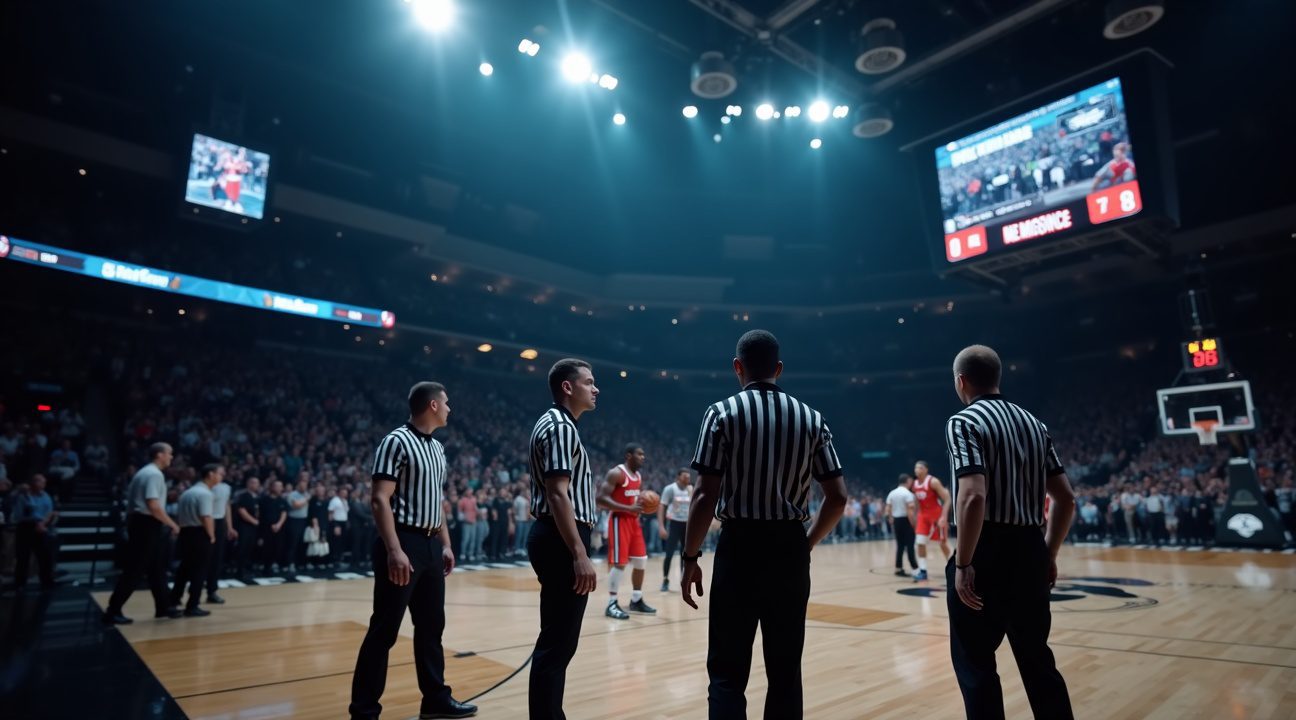
G League Experimental Rules Testing Future NBA Changes
The NBA uses its developmental league as an innovative laboratory for testing rule modifications that could reshape professional basketball. I’ve observed how these experimental rules address common criticisms about game pace, flow, and strategic limitations while providing valuable data for potential league-wide implementation.
Enhanced Strategic Elements and Game Management
Two significant changes focus on improving game management and strategic depth. The expanded Coach’s Challenge system allows teams two challenges per game instead of the current single opportunity, giving coaches more flexibility to contest crucial officiating decisions throughout contests. This modification addresses situations where teams exhaust their challenge early but face questionable calls during critical moments.
The Reset Timeout represents another strategic innovation designed for late-game situations. During the final two minutes, teams can advance the ball to frontcourt while making unlimited substitutions without requiring a traditional huddle. This rule eliminates the conventional timeout structure that often slows crucial game moments, allowing coaches to make tactical adjustments without disrupting game flow. The concept mirrors strategic innovations that top coaches have long desired.
Pace and Efficiency Improvements
Several experimental rules specifically target game pace and efficiency concerns:
- 14-second shot clock reset: Activated automatically when teams advance the ball to frontcourt, this reduces the previous 24-second reset that often led to extended possession times. The change encourages quicker offensive decision-making and increases possession totals per game.
- One Free-Throw Rule: This streamlines foul situations by awarding a single free throw worth varying point values based on the type of foul:
- Three-point fouls = one shot worth three points
- Two-point fouls = one shot worth two points
- Non-shooting fouls = one point
This system maintains scoring equity while dramatically reducing free-throw time, except during the final two minutes when traditional rules apply to preserve end-game integrity.
- Final Target Score overtime: Instead of timed overtime periods, this format ends play when one team scores seven points more than the regulation total. This untimed ending removes strategic fouling and lengthy timeouts, resulting in more decisive and thrilling overtime finishes.
These experimental approaches reflect broader concerns about modern basketball’s entertainment value and pace. Professional basketball has faced criticism regarding game length, excessive free throws, and predictable late-game scenarios involving intentional fouling. The G League testing provides concrete data about how rule modifications affect player behavior, game duration, and fan engagement without risking the integrity of NBA games.
The strategic implications extend beyond simple pace improvements. Coaches must adapt timeout usage, challenge timing, and late-game management strategies under these modified rules. Players experience different rhythm patterns, particularly regarding free-throw shooting preparation and overtime mentality shifts. These adjustments mirror how league changes historically influence team building and tactical approaches.
Implementation results will determine which experimental rules advance to NBA consideration. The league evaluates statistical data, player feedback, and fan response to assess each modification’s impact on competitive balance and entertainment value. Some rules may require additional refinement, while others could integrate into NBA play within upcoming seasons.
The G League’s role as a testing ground demonstrates the NBA’s commitment to evolution while maintaining the sport’s fundamental appeal. These experimental rules address specific pain points identified through years of analysis and fan feedback, potentially creating a more dynamic and engaging basketball experience. Whether these changes eventually reach the main league depends on their success in achieving the stated goals of faster play, increased strategic options, and fewer unnecessary stoppages.
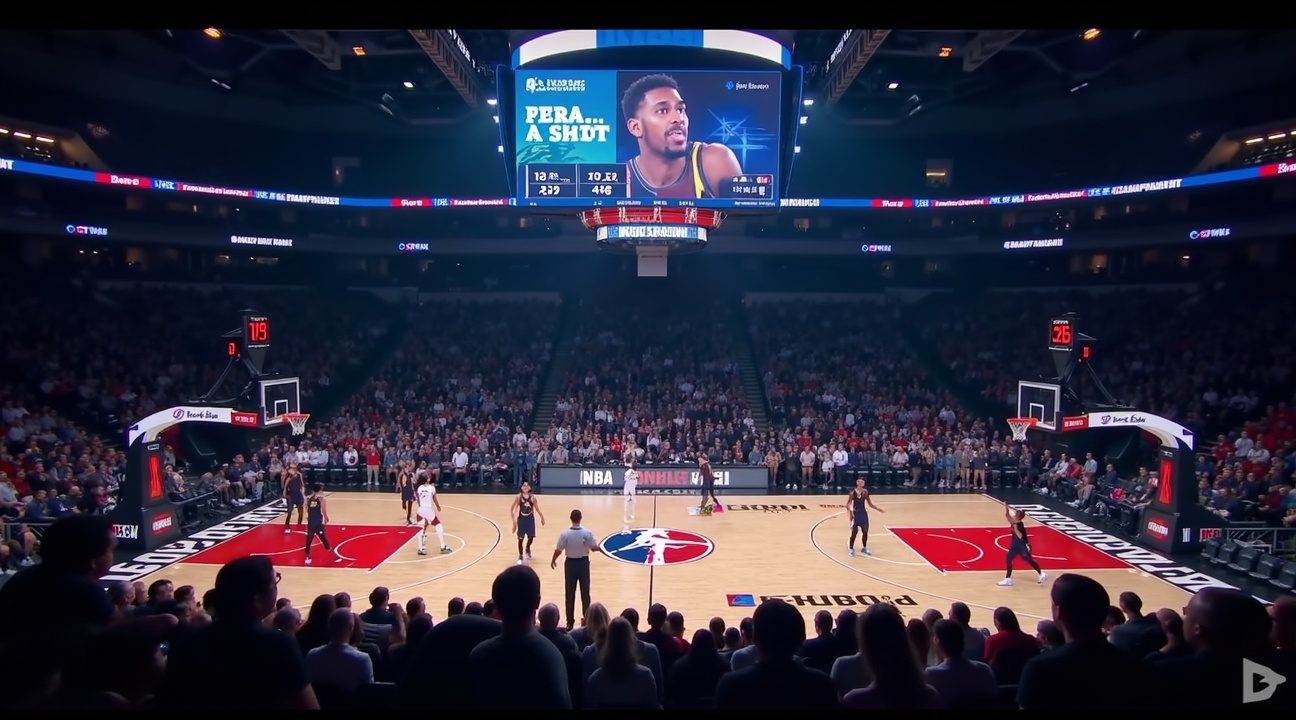
Rule Changes Have Shifted NBA Toward Offensive-Heavy Play
The NBA’s transformation into an offensive powerhouse didn’t happen overnight. Strategic rule modifications over the past few decades have fundamentally altered how basketball is played, creating an environment where scoring flourishes and defensive strategies face constant challenges.
Hand-checking restrictions stand as perhaps the most influential change affecting modern basketball. Prior to 2004, defenders could use their hands to impede offensive players throughout their movement across the court. The elimination of this physical contact opened driving lanes and gave perimeter players unprecedented freedom to operate. Guards like Stephen Curry and Damian Lillard benefit directly from these changes, as defenders can no longer bump them off their preferred spots on the floor.
The three-point line’s evolution has created the most dramatic shift in offensive strategy. When the NBA moved the line back to its current distance in 1997, teams averaged roughly 12 three-point attempts per game. Today’s teams launch over 35 attempts per contest, with some squads exceeding 50 attempts regularly. This dramatic increase reflects how coaching philosophies have embraced analytical insights about shot value and efficiency.
Floor spacing requirements have fundamentally changed player development and team construction. Traditional centers who once dominated paint areas now face pressure to extend their range beyond the arc. Players who can’t contribute to spacing find themselves marginalized, regardless of their other skills. This shift has created new positional definitions and forced teams to prioritize versatility over specialization.
Defensive Challenges in the Modern Era
Officials have adopted more protective stances regarding offensive players, creating additional hurdles for defensive schemes. Flagrant foul calls have increased dramatically, and referees show less tolerance for physical play that was once considered standard basketball contact. These changes have forced defensive players to modify their approach, often resulting in less aggressive contests and more open scoring opportunities.
Defensive players must now navigate several specific restrictions that didn’t exist in earlier eras:
- Zone defense rules that prevent traditional help positioning
- Restricted area violations that limit interior defense
- Freedom of movement emphasis that penalizes contact away from the ball
- Technical foul assessments for defensive communication deemed excessive
- Clear path foul interpretations that discourage transition defense
Team defensive statistics reflect these systematic changes clearly. Average points per game have increased from 97.5 in the early 2000s to over 113 in recent seasons. Field goal percentages have risen correspondingly, as defensive players struggle to contest shots effectively under current guidelines.
The ripple effects extend far beyond simple scoring increases. Individual player development now emphasizes offensive skills almost exclusively. Young prospects spend countless hours perfecting their three-point shooting and ball-handling rather than defensive fundamentals. This focus creates a generation of players who excel offensively but may lack the defensive instincts that characterized earlier eras.
Strategic adaptations have become necessary for teams hoping to remain competitive. Coaches design systems that maximize three-point attempts while minimizing mid-range shots, creating mathematical advantages that previous generations couldn’t access. Player acquisitions now prioritize shooting ability and offensive versatility over traditional defensive metrics.
Modern NBA games feature pace and space concepts that would seem foreign to fans from the 1990s or early 2000s. Centers regularly initiate offense from the perimeter, guards operate with switching defenses that create mismatches, and teams routinely score 120+ points without requiring exceptional shooting performances.
These rule modifications have created an entertainment product that appeals to casual fans while frustrating purists who prefer defensive battles. The changes reflect the league’s conscious decision to prioritize offense and scoring, recognizing that high-scoring games generate more fan engagement and television interest.
Player roles continue evolving as teams adapt to these rule changes. Traditional positions blur as versatility becomes essential, and veteran players must constantly adjust their games to remain relevant in this offensive-focused environment.

How These Changes Continue Reshaping Basketball Strategy
The modern NBA looks fundamentally different from the game that emerged decades ago, and I’ve watched as rule modifications have forced every franchise to reconsider their approach. Teams that refuse to adapt their strategic thinking find themselves struggling against organizations that embrace these changes and build around them.
The combined effect of tournament formats, advanced statistical tracking, enhanced replay systems, and experimental rules has created a chess match where traditional playbooks become obsolete. Coaches now design offensive systems that maximize efficiency within these new parameters, while defensive coordinators scramble to counter strategies that didn’t exist five years ago.
Statistical tracking changes have revolutionized how teams evaluate talent and construct rosters. Front offices dissect every possession through advanced metrics, leading to the widespread adoption of three-point heavy offenses and position-less basketball. I’ve observed how contract extensions now reflect players who can adapt to multiple roles rather than traditional position specialists.
The emphasis on entertainment value shapes every strategic decision. Rules that encourage offensive production have pushed teams away from grinding, defensive-minded approaches that dominated previous eras. Modern coaches prioritize pace and space, knowing that fans and league officials favor high-scoring affairs over methodical, low-scoring contests.
Strategic Evolution Across Different Aspects
Game flow modifications force real-time strategic adjustments that separate elite coaches from average ones. Consider these key adaptations teams must make:
- Roster construction now prioritizes versatility over specialization, with players capable of switching defensive assignments and contributing offensively from multiple positions
- Timeout usage has become more strategic, with coaches saving them for crucial moments rather than using them to stop opponent runs
- Substitution patterns have evolved to maximize favorable matchups created by new rules and officiating emphasis
- Practice time allocation shifts toward situational basketball that mimics tournament-style pressure and replay review scenarios
The G League continues serving as a testing ground for future NBA implementations, and smart organizations study these experiments carefully. Rule adaptations that prove successful at the developmental level often find their way into the main league, giving forward-thinking teams competitive advantages when changes arrive.
Traditional basketball strategy emphasized half-court execution, defensive positioning, and physical intimidation. Modern adaptations require coaches to think three-dimensionally about spacing, player movement, and analytical optimization. Teams that mastered old-school fundamentals had to reconstruct their entire philosophical approach.
Trade deadline decisions now factor in how players fit within this evolving rule landscape. General managers can’t simply acquire talent; they must consider how that talent adapts to changing officiating emphasis and strategic trends.
Player development programs have shifted focus accordingly. Young athletes entering the league need broader skill sets than their predecessors, and veteran players must continuously evolve their games to remain relevant. Retirement decisions often reflect players’ inability to adapt rather than physical decline alone.
The entertainment value component creates pressure for constant innovation. Teams experiment with unconventional lineups, aggressive defensive schemes, and offensive systems that push rule boundaries. This experimentation cycle accelerates strategic evolution and rewards organizations with strong analytical departments.
Basketball transformation continues at an unprecedented pace, with each rule modification triggering cascading effects throughout team strategy. Strategic moves that seemed impossible under previous rule sets become standard practice, while traditional approaches lose effectiveness.
I’ve noticed how successful teams now employ multiple strategic identities, adapting their approach based on opponent weaknesses and game situations. This flexibility reflects the modern league’s emphasis on maximizing entertainment while maintaining competitive balance. Teams that cling to outdated strategies find themselves consistently outmaneuvered by organizations that embrace change and build systems around evolving rules.
The pace of rule adaptation shows no signs of slowing, meaning strategic evolution will remain constant. Organizations must invest in analytics, player development, and coaching education to remain competitive in this transformed basketball landscape.
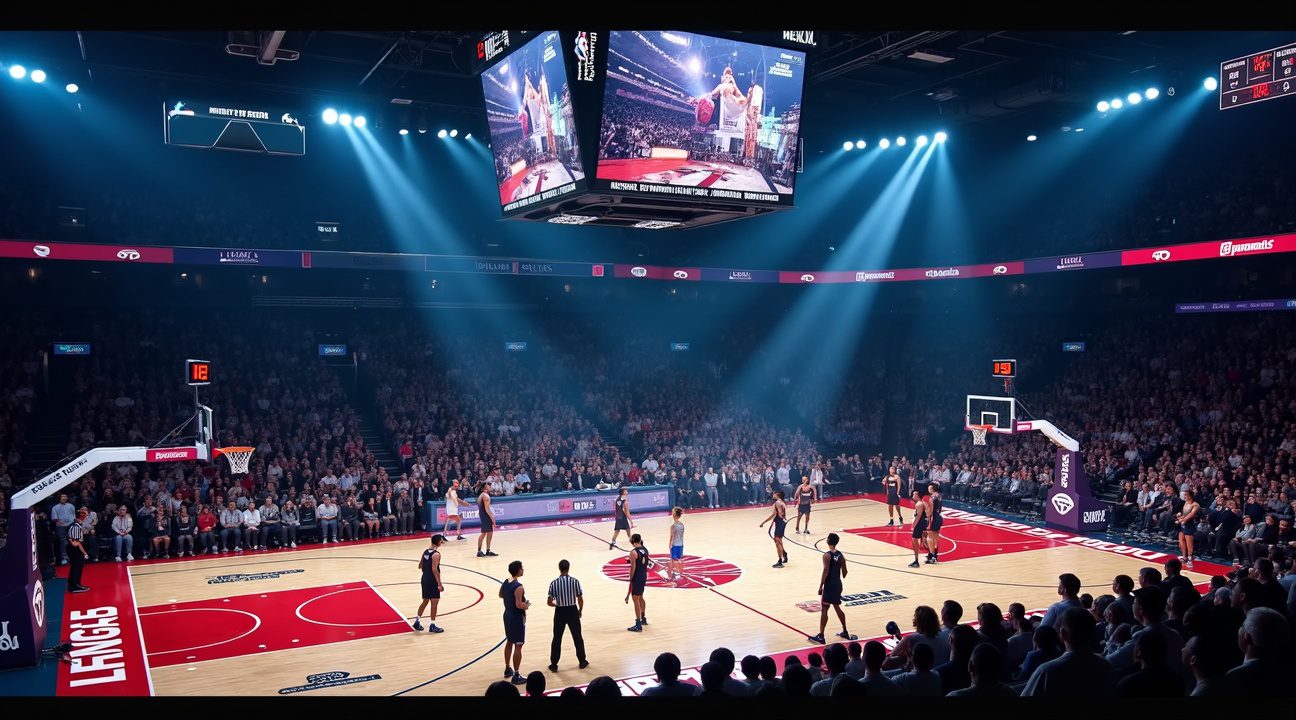
Sources:
BasketNews – “NBA introduces new rule on long shots”
beIN SPORTS – “NBA Summer League: What Are the New Rules?”
Bleacher Report – “Explaining the NBA Rule Changes for 2024-25 Season Including NBA Cup Bracket Format”
Bleacher Report – “NBA Announces Rule Change for End-of-Quarter Heave Stats at 2025 Summer League”
NBA G League – “2024-25 NBA G League Experimental Playing Rules Overview”
Bright Side of the Sun – “How 4 Simple Rule Changes Could Restore Balance to the NBA”
Wikipedia – “2025–26 NBA season”

